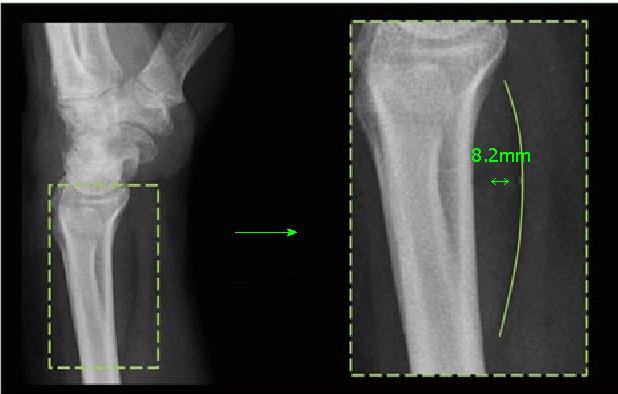Wrist radiographs are routinely acquired to assess injuries around the wrist, distal forearm and the carpal bones, in the acute setting as well as in follow-up. This is also true in the pediatric population. Distal radius and ulna fractures account for the majority of pediatric wrist injuries with an incidence peak in adolescence1,2,3.

Pediatric surgeons in training or emergency physicians often interpret trauma radiographs, sometimes without being backed-up by experienced pediatric radiologists. Even in developed countries, shortages of radiologists were reported, posing a risk to patient care4,5. In some parts of the world, access to specialist reporting is considerable restricted, if not unavailable6.
Studies indicated various amounts of diagnostic error in reading emergency X-rays, up to a percentage of 26%7,8,9,10. Further modalities like ultrasound, computed tomography (CT), and magnetic resonance imaging (MRI) can be helpful in case of uncertainties after completed clinical examination and radiography. They increase sensitivity and specificity. However, some fractures are even occult in these modalities11,12,13.
Computer vision algorithms were found to be useful in many medical fields, mainly when large amounts of data can be analyzed. First positive experiences with the detection of pathologies in trauma X-rays were recently published14,15,16,17. There is also a limited number of studies dealing with automated detection of wrist fractures in adults18,19,20,21,22. Computer vision applications typically rely on large numbers of training samples23,24. Large publicly available datasets enable researchers around the globe to compare their algorithms in a standardized way, yet, there are still limited options accessible to date25.
We present a comprehensively annotated pediatric wrist trauma radiography dataset (GRAZPEDWRI-DX) for machine learning. The acronym is composed of the terms “Graz”, “Pediatric”, “Wrist”, and “Digital X-ray”. The image collection is de-identified, distributed in an accessible file format (Portable Network Graphics, PNG, 16-bit grayscale), and publicly available. It is accompanied by various annotations as well as image and object tags established by human experts.




